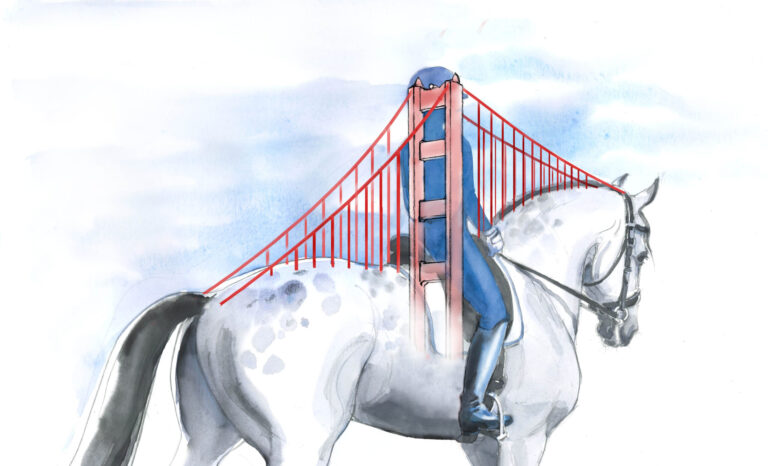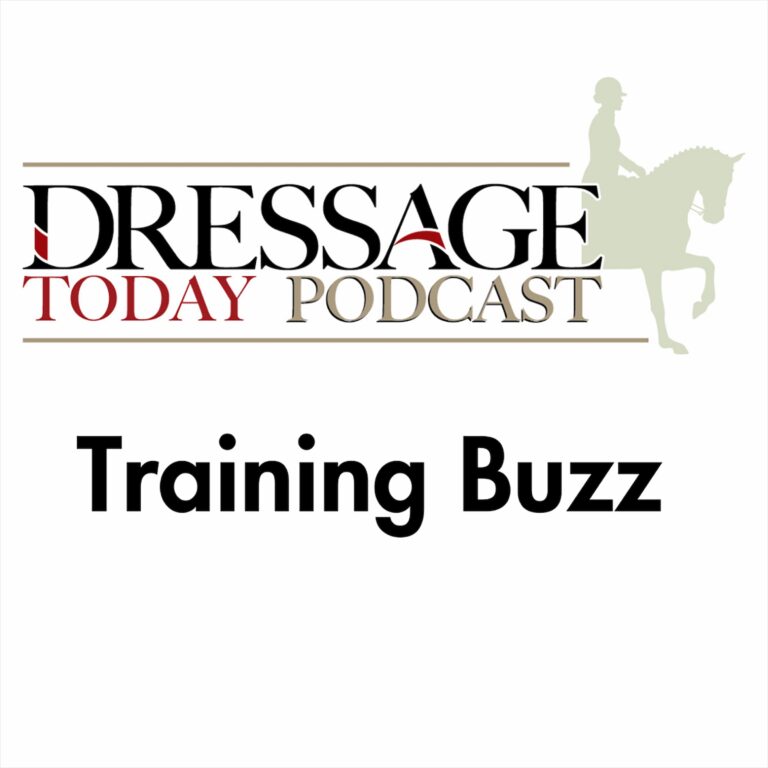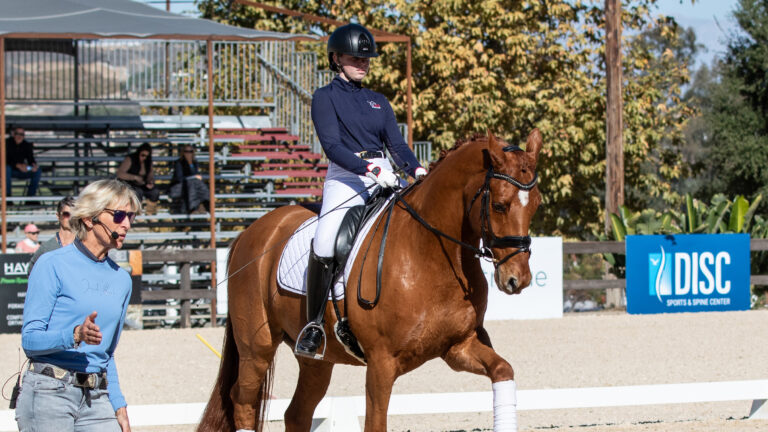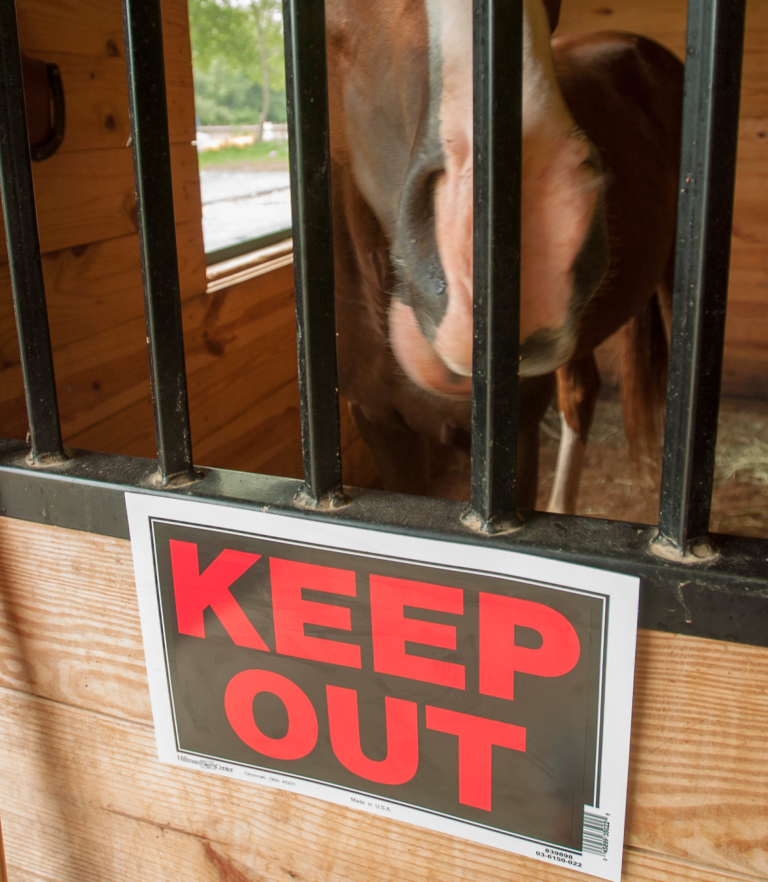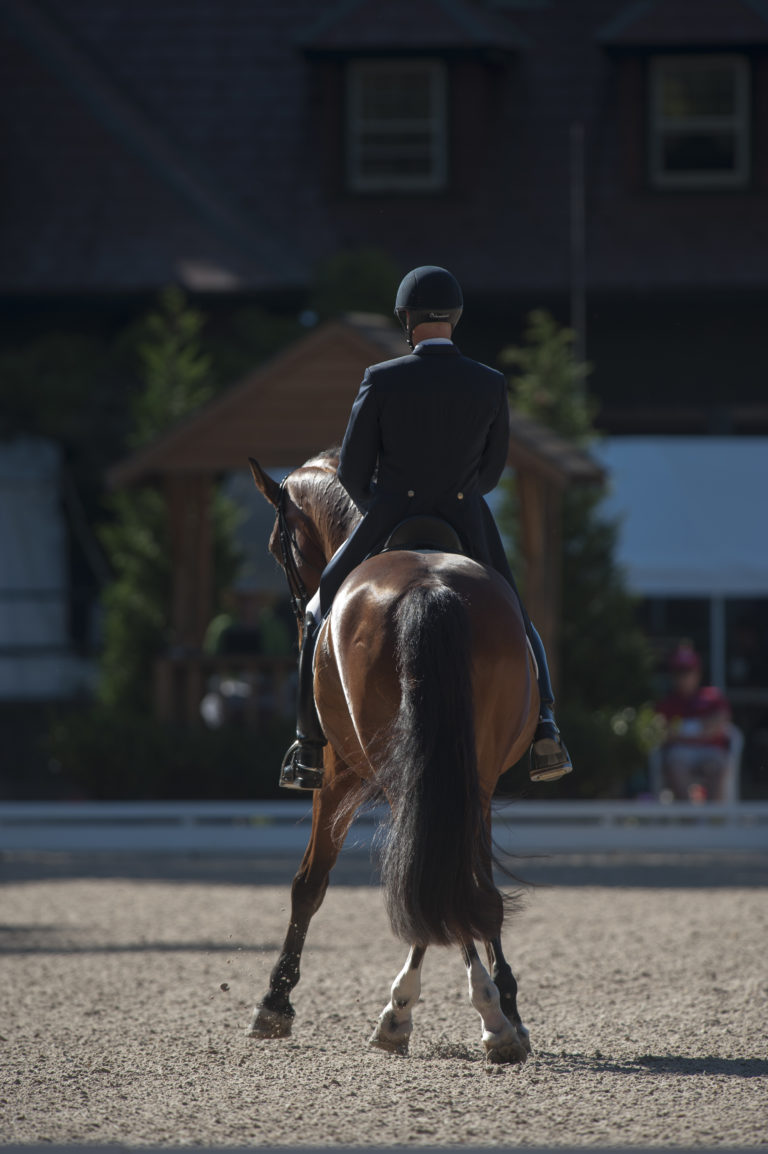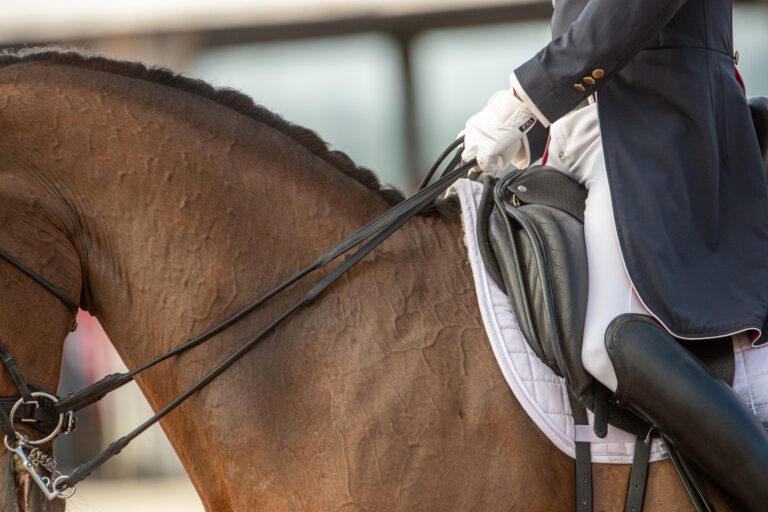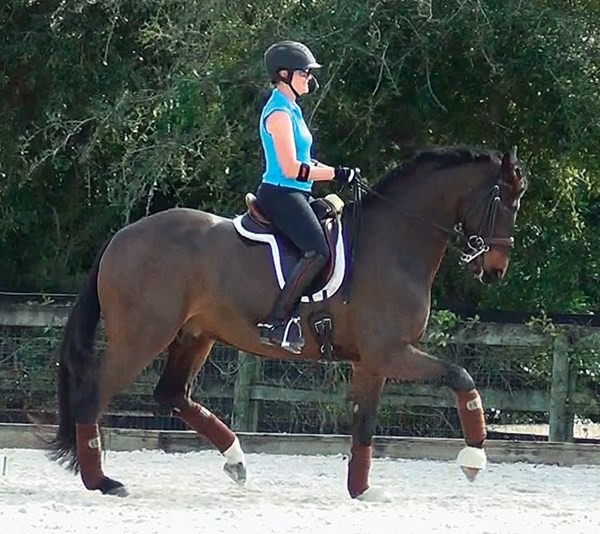
Here we have Jennifer Truett on Sunset N, her 7-year-old Danish Warmblood. He is schooling passage for the first time in this photo. What a talented horse! I am sure Jennifer is very proud of him and rightly so.
Sunset N looks eager, full of energy and concentrating on his rider. Jennifer is sitting with a natural upright and stable upper-body position and helping her mount as well as she can to balance this new level of collection. This is a challenge for both of them and, when learning something new, it cannot be expected to be perfect yet. So in looking at this photo it is important to know that the horse is only 7 and this is his first time schooling passage.
The level of collection needed for passage requires strength. I can see in this photo that he has not yet fully developed. There is a challenge to stay supple when you need all the power for collection at the same time. In her attempt to help him stay active and powerful through his back and get the necessary lift of his front legs, Jennifer is carrying her hands a bit high and her lower leg a little too far back. She is incorrectly using the support from her knee against the saddle.
Sunset N is working with a closed mouth and a nice outline of his neck. Of course, I can see that he is a little bit behind the vertical and shows a slight tension in his neck. I could imagine him stretching out a little more for the bit, and then he would look absolutely stunning, but in this situation, I believe it is the best he can do right now. As Jennifer is not pulling back on the reins, she seems to be aware of this and will surely correct it with more training.
As a tip, I would like to point out that carrying her hands high makes Jennifer use more curb contact than snaffle. This may cause Sunset N to get behind the vertical more than intended. On the snaffle, a short raising of the hands can help to encourage self-carriage, but using too much curb causes more flexion in the poll.
Looking at Sunset N, I notice that the outline of his back (especially behind the saddle) shows some softness and is not yet fully developed. Using this much power, he becomes a little short in his back—not by tucking his hind legs under the weight of the rider more, but by hollowing his back. This may be the only way for him to be able to perform the passage movement right now, but should improve with training.
This photo shows that young horses can perform wonderful moments, but are not yet strong enough to hold them for a long time. With that much lift of the legs this horse must be built carefully and not ridden too long in collection. Short moments, a few steps of that higher collection, should be ridden in a playful manner and always with a regard for the suppleness of the horse being the highest priority.
Susanne von Dietze is a leader in equestrian biomechanics. A physiotherapist, licensed Trainer A instructor and judge for dressage and show jumping, she gives lectures and seminars throughout the world, including at the prestigious German Riding Academy in Warendorf. She is a native of Germany and now lives with her husband and three children in Israel, where she competes at the international level. She is the author of two books on the biomechanics of riding: Balance in Movement and Horse and Rider, Back to Back. Find her books at HorseBooksEtc.com.


